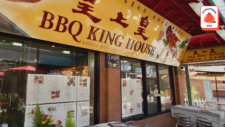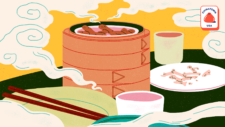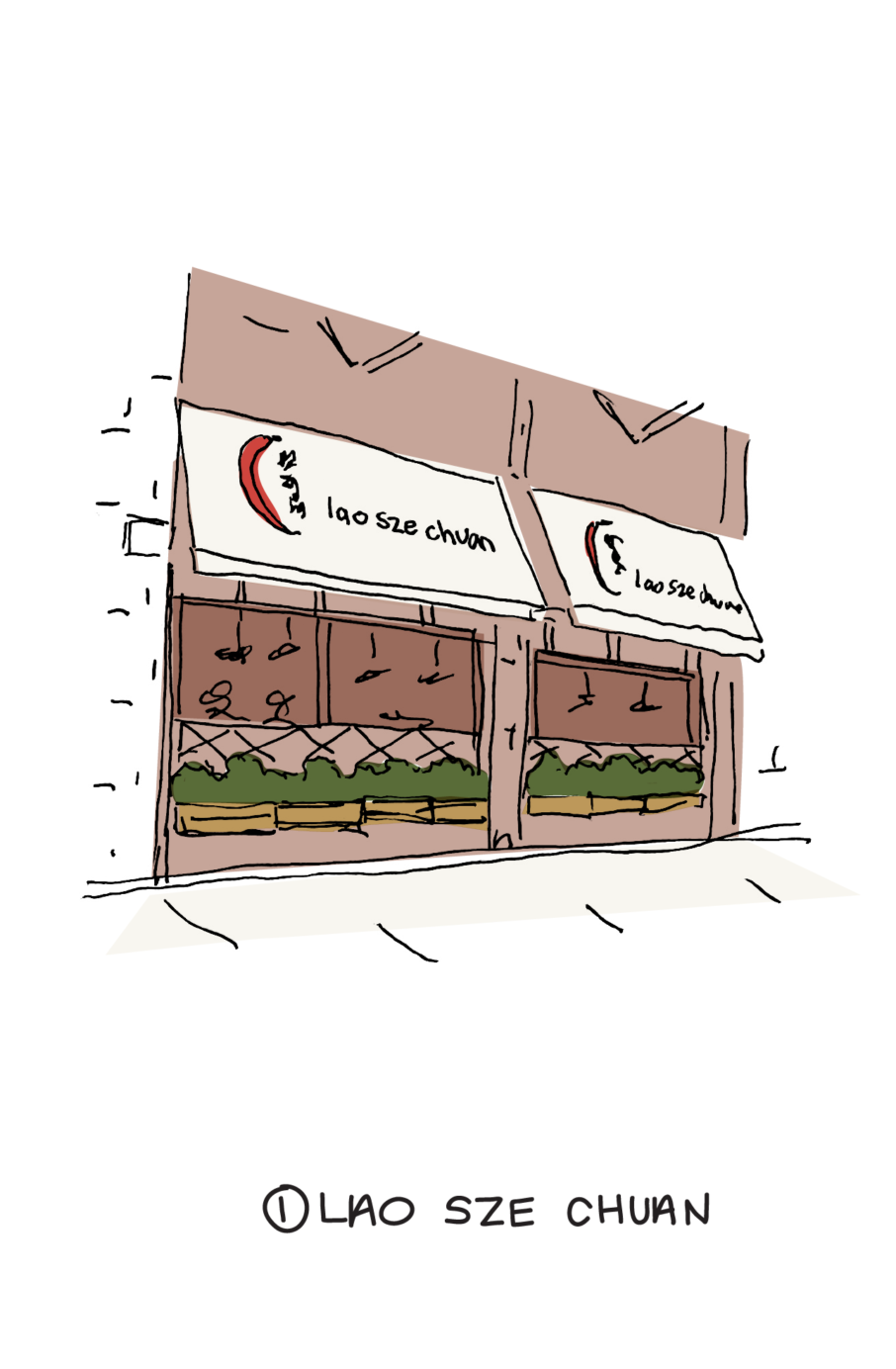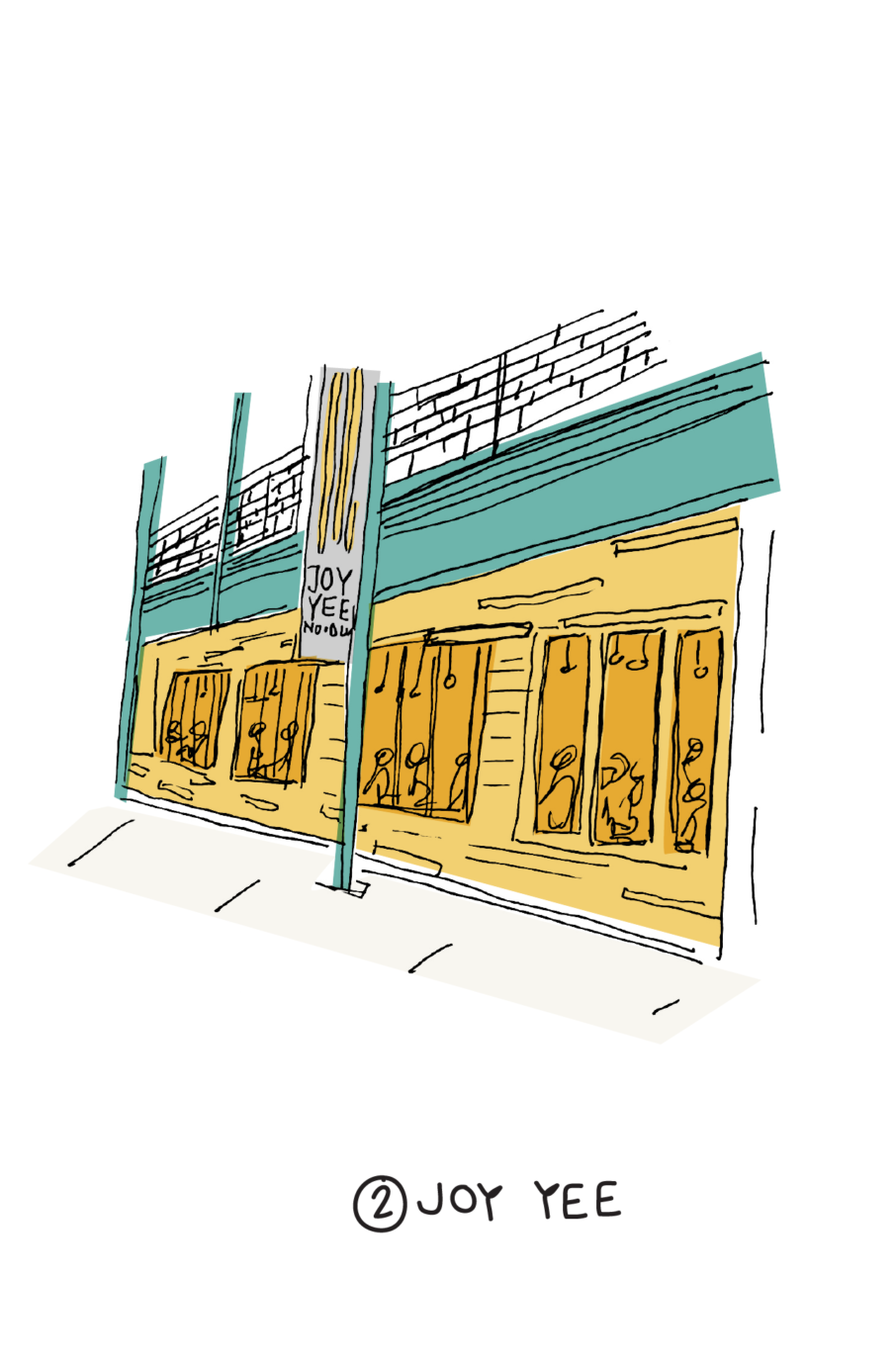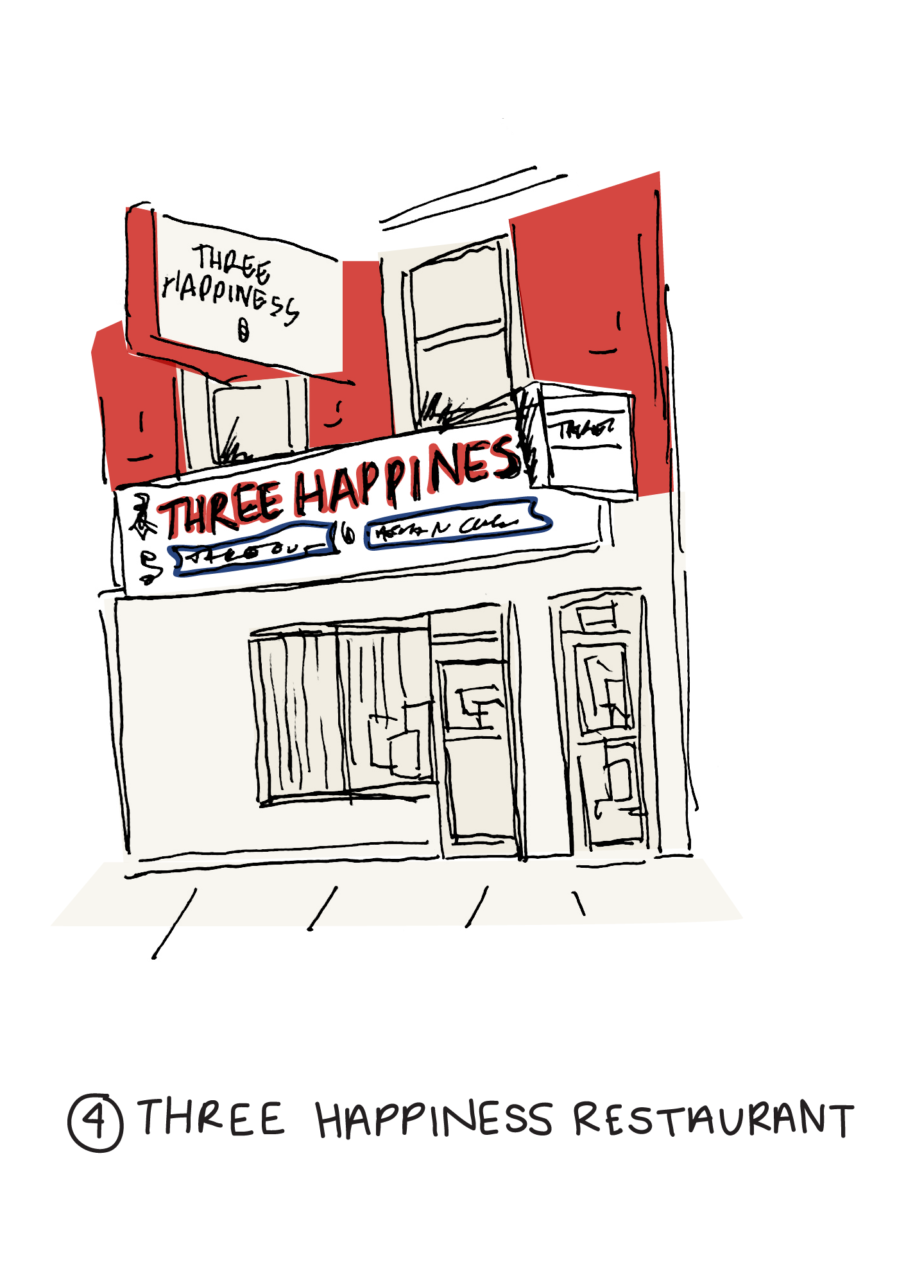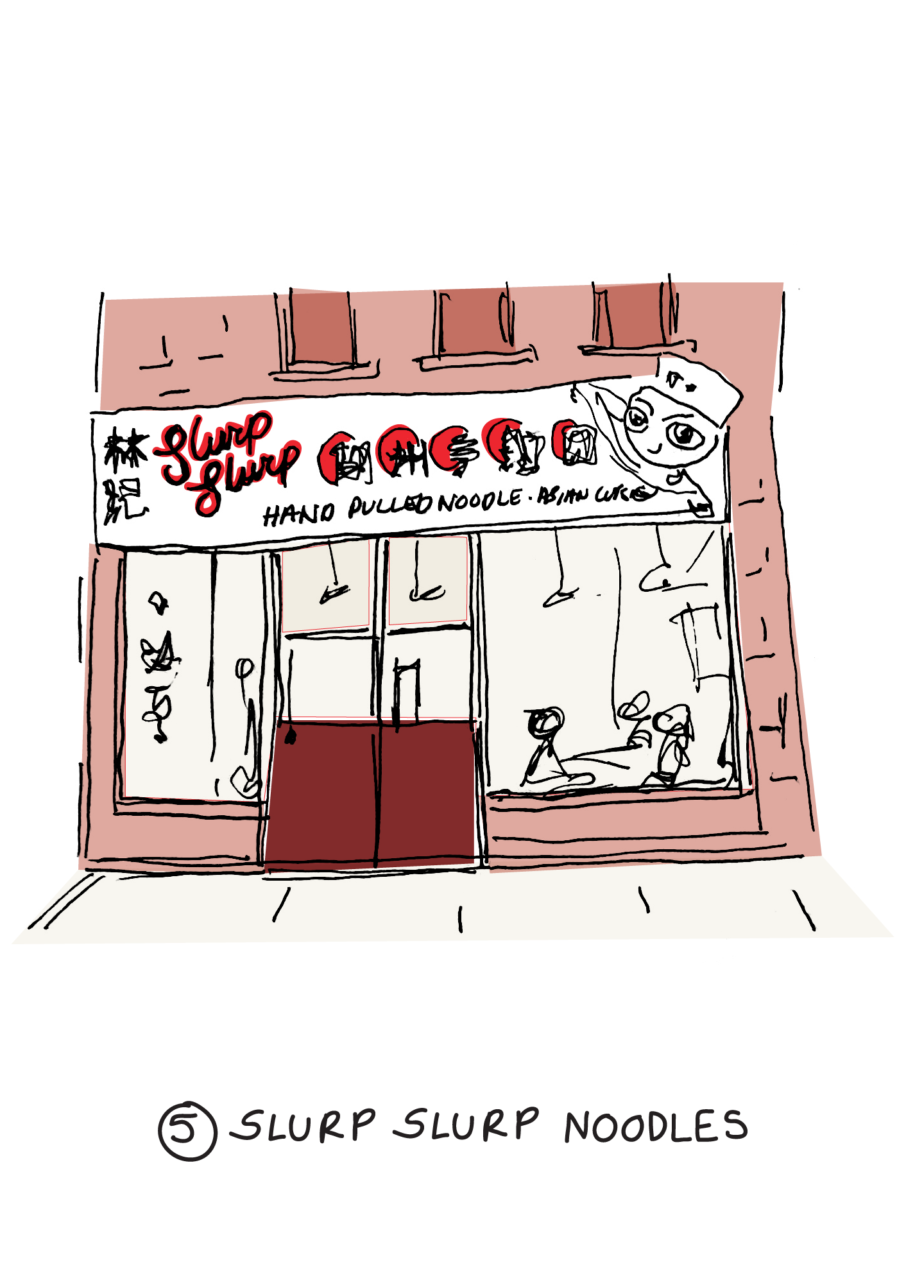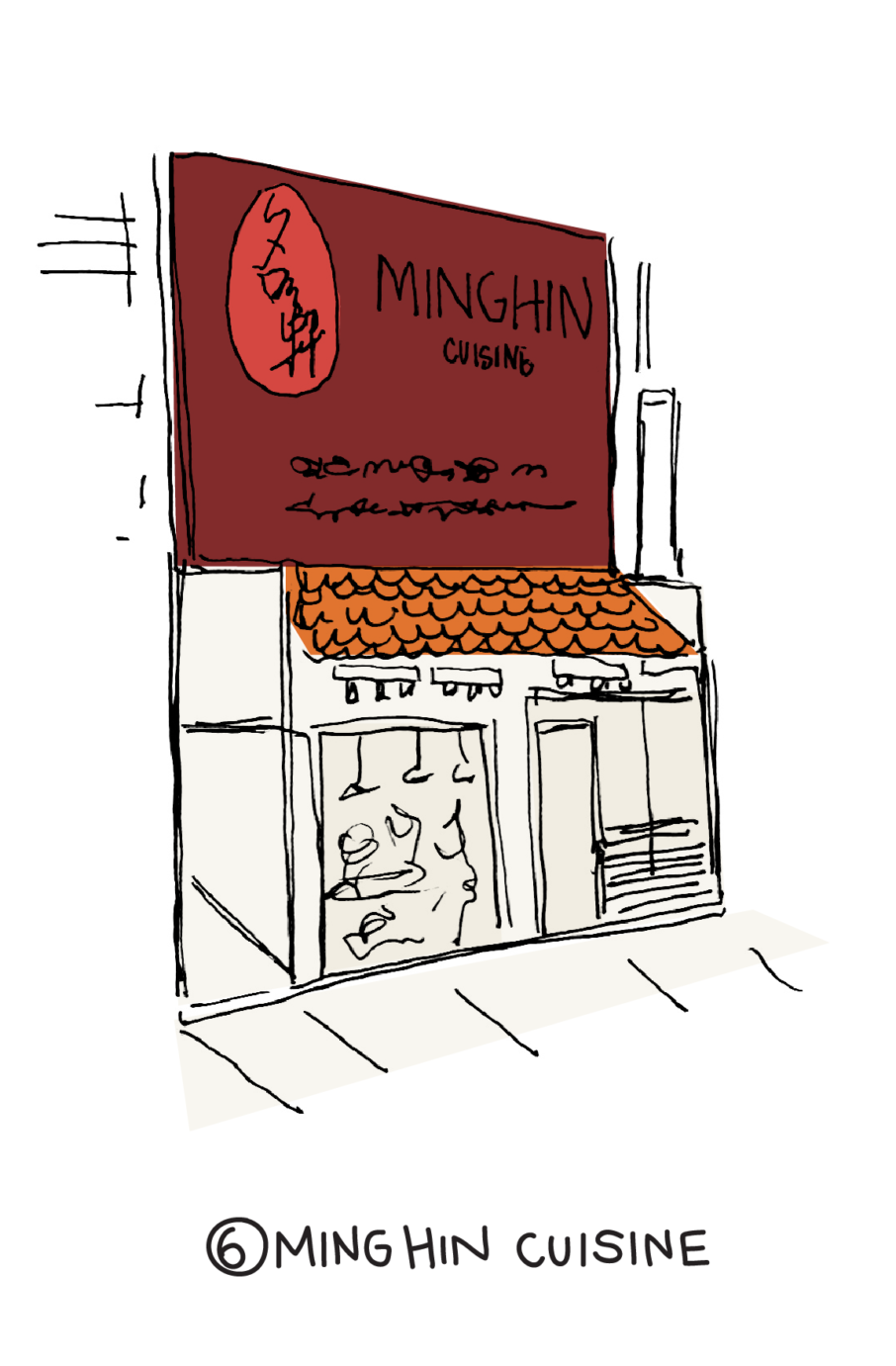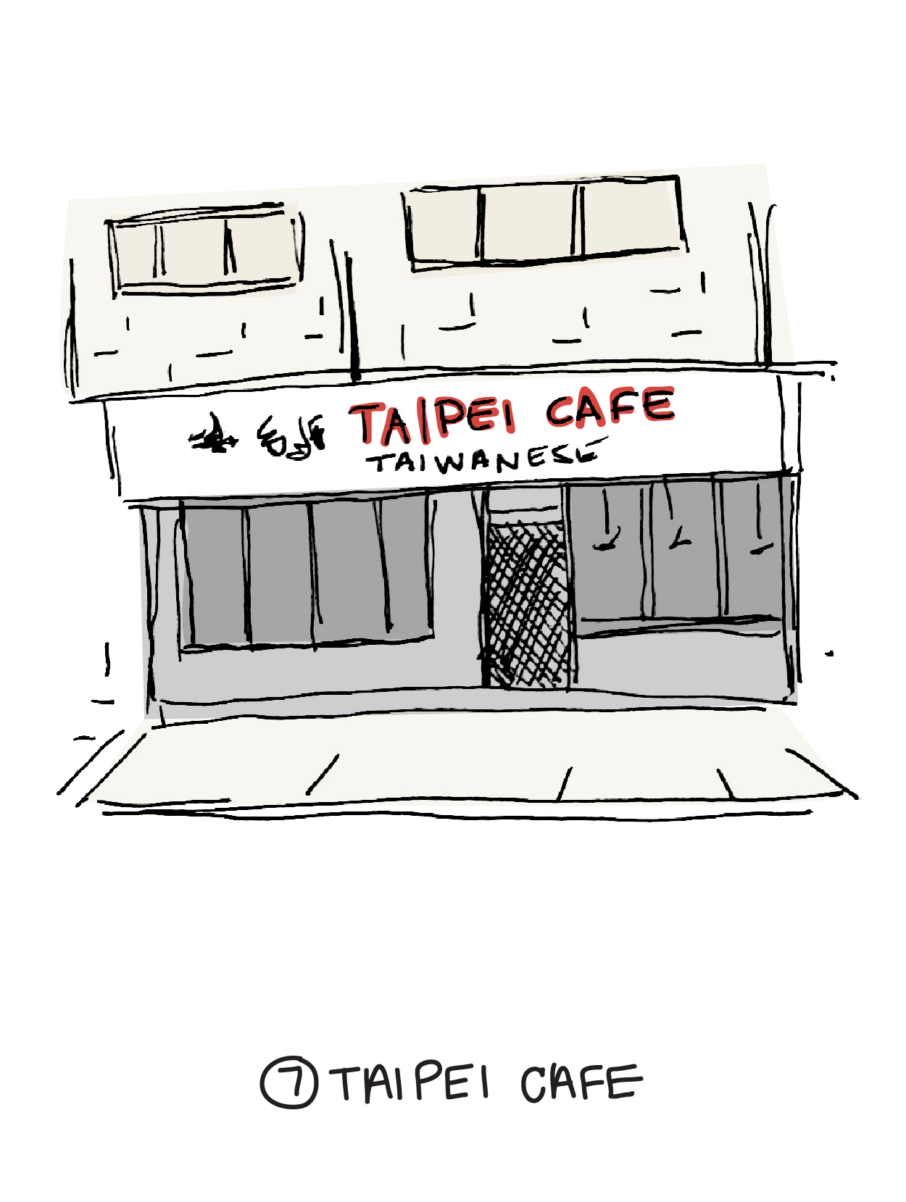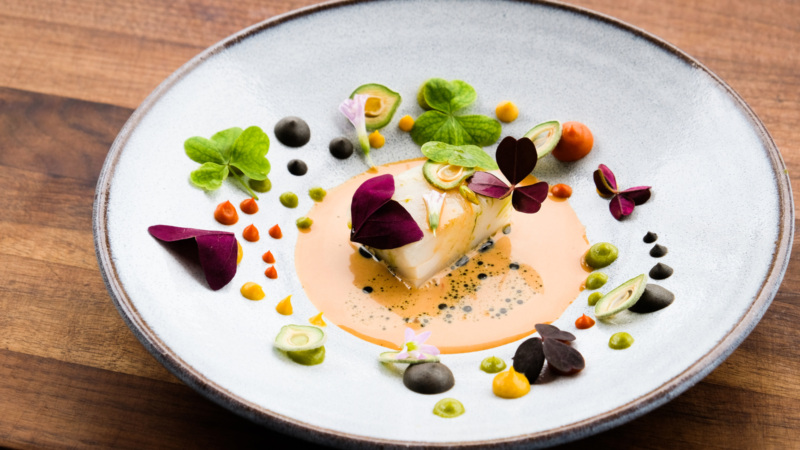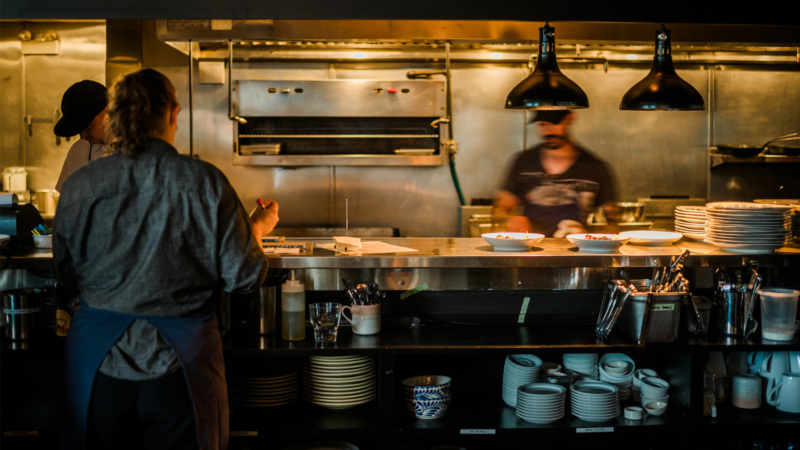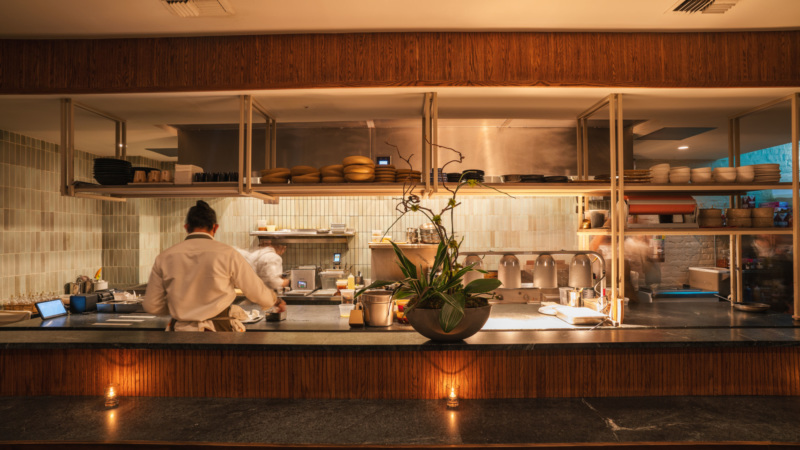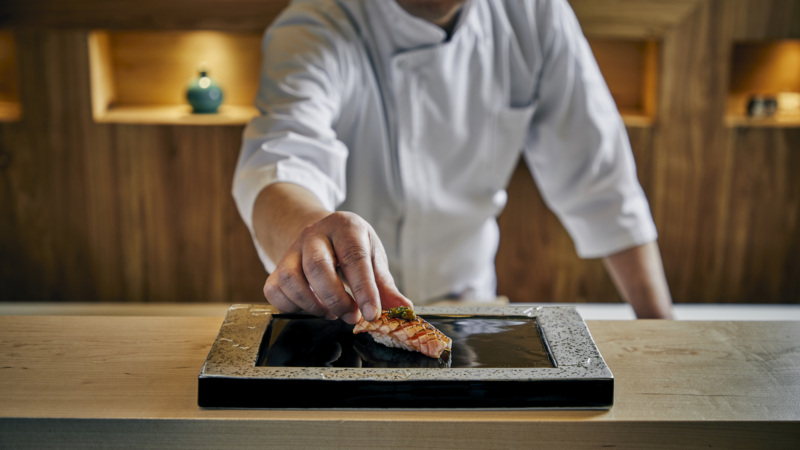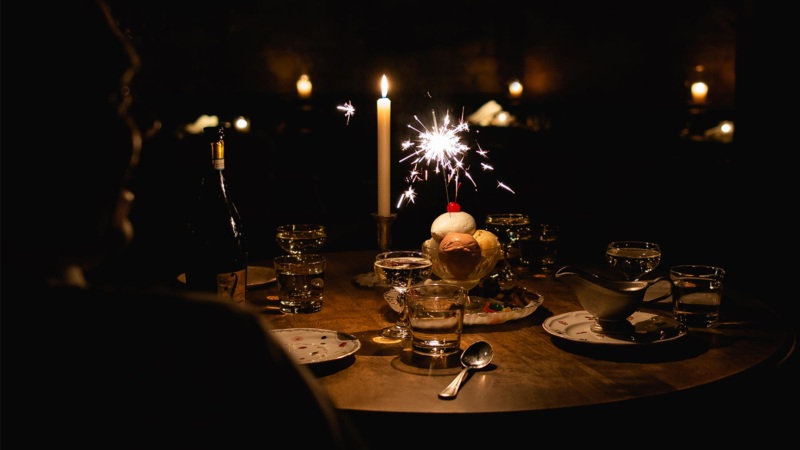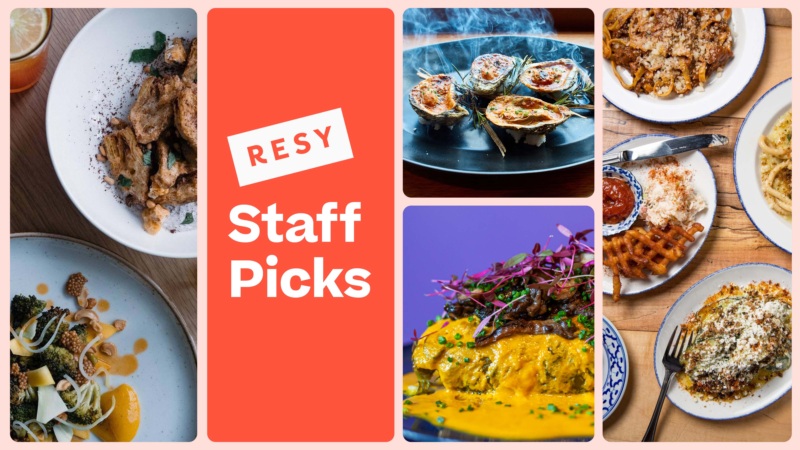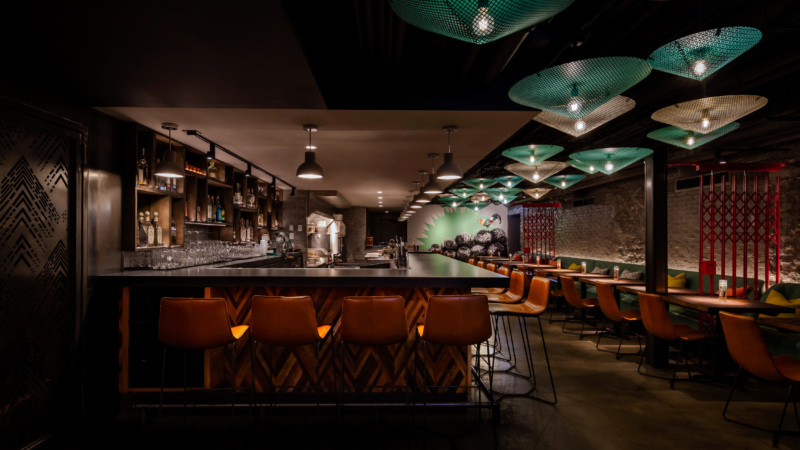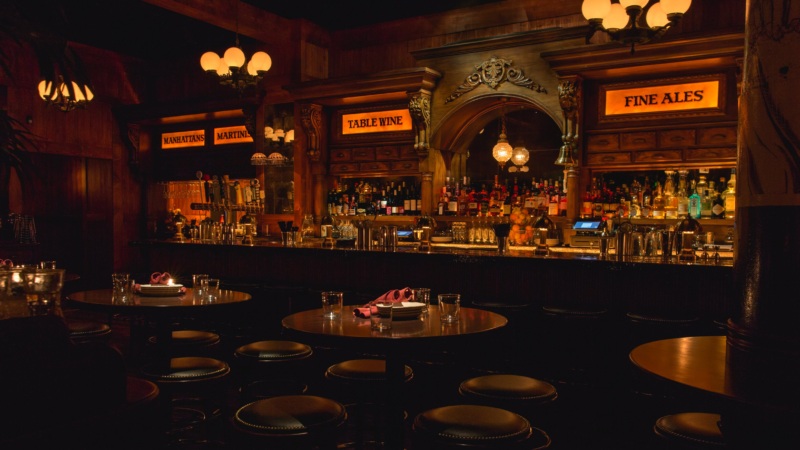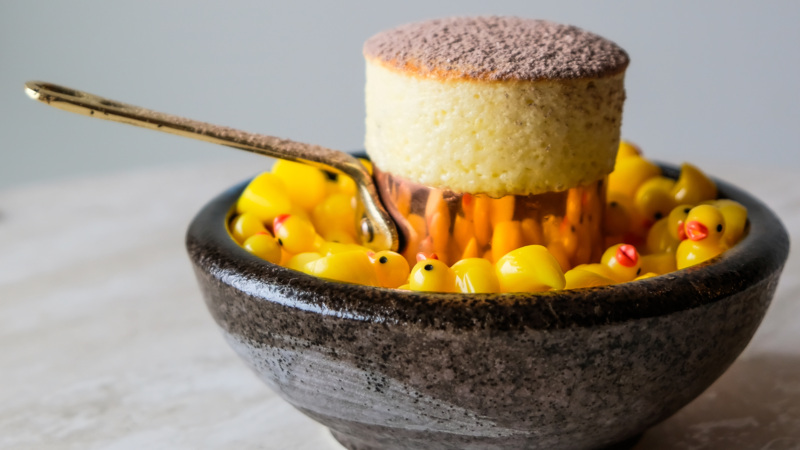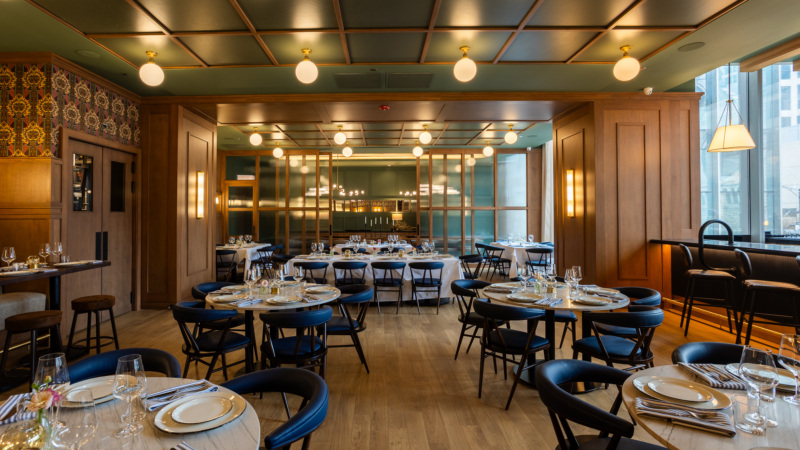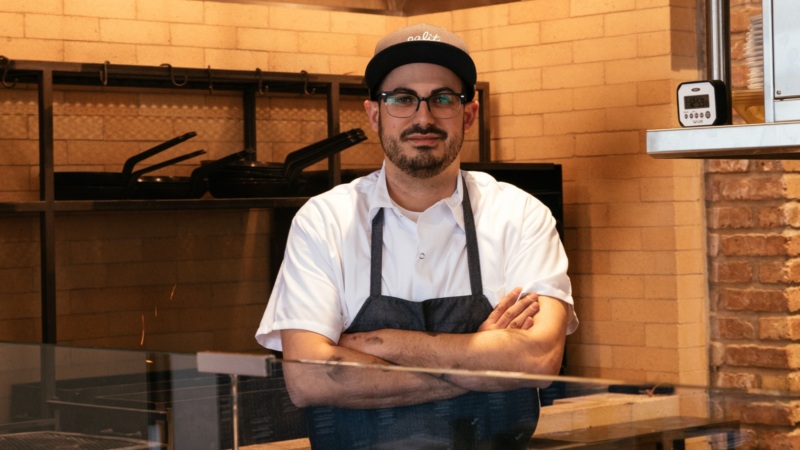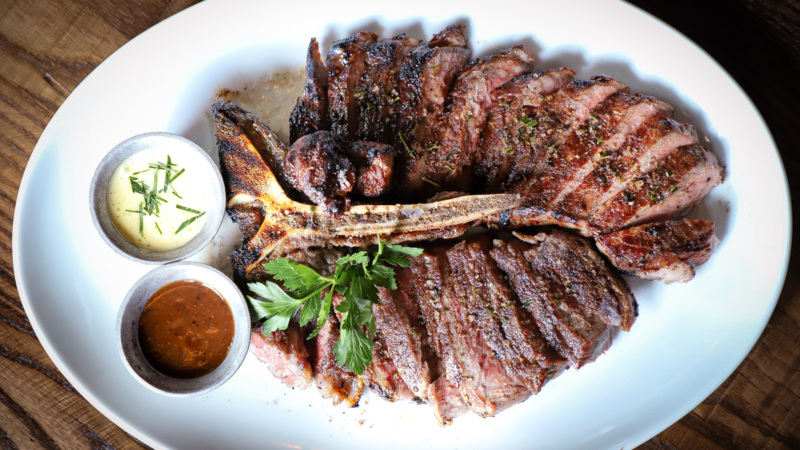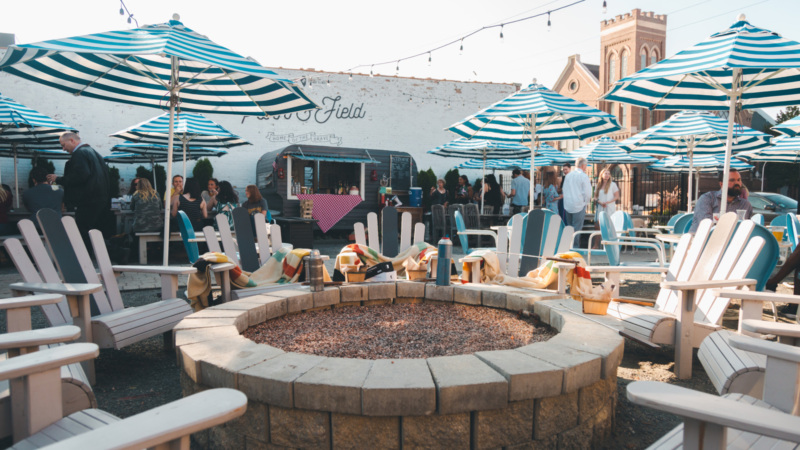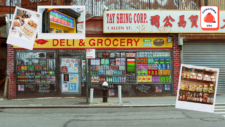

Eight Dishes That Tell the Story of Chicago’s Chinatown
On a warm summer day in other times, the most idyllic way to experience Chicago would be to board a water taxi from downtown and head south. Watch the architectural grandeur glide past, then slowly recede until you cross under the Roosevelt Road bridge. There, the Chicago skyline reveals itself in panoramic technicolor.
The true destination of this $7 ride would be Ping Tom Park, two-and-a-half miles from downtown along the South branch of the Chicago River. This terminus is a former railroad yard-turned-rolling green space, with ornate columns and pagodas over 17 acres. This is how I insist first-time visitors experience Chicago’s Chinatown. In the shadow of industrial shipping lanes and concrete warehouses, Ping Tom Park is a quiet urban oasis to reflect. (The water taxi shut down amid the pandemic, but hopefully will reopen soon. The park is still open.)
A five-minute walk from the park, through quiet residential streets, and you arrive at why most visitors come to Chinatown: the food. Within these 11 square blocks is one of the most restaurant-dense neighborhoods in Chicago. (Roughly 60 restaurants belong to Chinatown Chamber of Commerce, plus other food businesses that aren’t current members.)
In the 15 years I’ve frequented Chicago’s Chinatown, the composition of restaurants has grown richer and more varied. Now there are places devoted to Korean wings, Japanese ramen, and Vietnamese pho. Chinese restaurants still reign, though, with different culinary regions represented from Shanghai to Xi’an. There might not be a Chicago neighborhood more conducive to a walking food tour, where you can sample the signature dishes from a half dozen restaurants in one afternoon.
You can begin telling the story of a place from a single dish. In one, you travel back in time to taste the Chinatown of yore. Half a block away, experience the superlative technique of a chef who in a more just world would receive multiple Michelin stars. Down the street, there’s a dish ubiquitous on menus today but virtually nonexistent in Chicago 20 years ago. Dish by dish, they build a culinary narrative of a neighborhood that’s both forward-looking and unafraid to acknowledge its history and soul.
Needless to say, the effects of the pandemic-related shutdown has been devastating to Illinois restaurants, but doubly so for Chinatown. Even before the state mandated nonessential businesses to close in March, the neighborhood faced unfounded fears that its businesses were hubs of COVID-19. Starting in late January, business in Chicago’s Chinatown began to nosedive; restaurants that remained open for takeout and delivery saw revenue fall as much as 75%. But there are signs of a modest rebound: Outdoor seating has been installed in Chinatown Square, and virtually everyone wears face masks (like in most Asian countries, face masks are part of day-to-day life, without the political pushback).
The good news is the pre-pandemic version of Chinatown can still be experienced. Many restaurants are up and running, and fewer customers make the neighborhood more relaxed and manageable.
Dry Chili Chicken from Lao Sze Chuan
If you order la zi ji in its native Chongqing, chances are you’ll find chunks of fried chicken in a ball pit of red chile peppers. The dish almost looks comically spicy. But there’s no expectations to consume all the chile, stir-fried to a crisp-and-toothsome state. The peppers’ purpose is to impart that heady, roasty aroma as you fish for the chicken pieces.
As ubiquitous as that dish is now stateside, la zi ji was a relative unknown in the U.S. even 20 years ago. In Chicago, one Chinatown restaurant helped introduce that dish and the fiery-numbing potential of Sichuan gastronomy: Lao Sze Chuan.
It wouldn’t be hyperbole to call Tony Hu a trailblazer. The Chengdu-raised chef opened Lao Sze Chuan in 1998 and brought dishes that might make non-Sichuanese diners recoil: frog, kidney, duck beak, and other unfamiliar ingredients. Still, with 300-plus menu items, there was bound to be something for everyone, and Lao Sze Chuan soon became Chicago’s most famous Chinese restaurant. Its version of la zi ji, named Dry Chili Chicken here, continues being Hu’s top seller. Lao’s version isn’t as chile-extreme as ones you’d find in Chongqing (the pepper-to-chicken ratio leans in favor of the bird), but the crispy, garlicky, tongue-tingling nuggets of dark meat chicken is every bit as appealing.
Hu’s growing restaurant portfolio earned him the moniker “Mayor of Chinatown.” But in 2016, Hu was sentenced to a year in prison after pleading guilty to wire fraud and money laundering at his restaurants. Today, Hu is attempting a Chinatown comeback. Earlier this year, Hu brought the Mrs. Gu Skewers and Hot Pot franchise to Chicago. His Lao empire remains, albeit somewhat diminished, with Lao Sze Chuan as its flagship. When we look back at Chicago Chinatown’s culinary boom, Lao Sze Chuan just might be the biggest reason why. // Lao Sze Chuan, 2172 S. China Pl., laoszechuanusa.com.
Bubble Tea from Joy Yee
In the mid-1990s, bubble tea fever crossed the Pacific and reached Southern California’s San Gabriel Valley. It was the Taiwanese kids who were trendsetters, sucking tapioca pearls through straws as thick as magic markers. Soon, the drink turned from novelty to mainstream, reaching across many cultures.
Such is the sight outside Joy Yee, where during summer months the restaurant opens takeout windows exclusively for drink orders. Those long lines resemble the United Nations: All ethnicities, kids young and old, ordering from what seems like an infinite combination of blended fruits, jellied and tapioca toppings, juices, and teas.
Joy Yee can rightfully claim that it helped bring bubble tea mania to the Midwest. It first arrived in Evanston in 1994, then added its now-flagship Chinatown Square location in 1996. The food menu is a Greatest Hits of Pan-Asian cooking, with Korean japchae and pad Thai sharing a menu alongside mapo tofu and Singapore vermicelli.
But the real draw is its drinks menu, which continues to grow with each passing year (the “whipped cheese” topping craze recently arrived). Bubble tea aside, Joy Yee also broadened Chicagoans’ juice vocabulary — lychee, durian, winter melon — you certainly can’t find those fruits at Jamba Juice. Here’s a fun game to play at Joy Yee: Order the taro freeze smoothie and ask yourself, “What does this remind me of?”
It tastes exactly like buttered popcorn. // Joy Yee, 2139 S. China Pl., joyyee.com.
Peking Duck dinner special from BBQ King House
About a decade ago, BBQ King House — a Cantonese roastery in Chinatown Square — offered a special, the best dinner deal in town: a Peking duck dinner for four, only $28.88. It came with that crisp and unctuous duck skin, sliced and nestled in fluffy steamed gua bao buns. The meat from the duck was picked off and stir-fried with vegetables. The rest of the carcass got stewed in a soup. And just for kicks: a bonus salt-and-pepper shrimp plate.
Over the years, the set dinner increased in price to $33.88, and now, $39.88. But make no mistake: a Peking duck dinner, the most regal of Chinese banquet dining experiences, is still almost irrationally cheap at $10 a person. The countless people I’ve sent to BBQ King House over the years invariably text me afterward some version of: “OMG I’m coming back here once a week.”
Cantonese BBQ does not abide by the strict American definition of barbecue; no smoke is imparted into the meats. Rather, the meat — be it whole ducks, chickens, or fatty slabs of pork shoulder — get furnace-blasted in a vertical roaster. The high heat gives pork the crackling, molar-gnashingly crunchy, exteriors and toffee-like sticky crispiness that good char siu requires, and Peking duck skin into one perfect bite of meat-and-fat brittle.
BBQ King House turns this Hong Kong-indigenous cooking method of siu mei into high art, evidenced by the maltose-shellacked roasted ducks that glimmer through the window case. Sure, there’s no easier takeout dinner than a container of soy sauce chicken, char siu, and steamed rice to go. But it’s the dine-in Peking duck dinner special — still the best dinner deal in town — that entices you to sit and stay for a while. // BBQ King House, 2148 S. Archer Ave., bbqkingonline.com.
Chop Suey from Three Happiness
Chinese people (of which I am one) often scoff at Chinese American food. I’ve come to a detente, accepting moo goo gai pan and crab rangoon as its own genre. It may not be the Chinese cooking I grew up with, but it is for many Chicagoans.
Three Happiness is a relic, but a steady relic. It’s been in business for 50 years on the south side of Cermak Road, the dividing line between old and new Chinatown to the north. Two-thirds of customers, the owner once told me, are not Chinese. Perhaps the mala pork kidneys one block north are too exotic, so Three Happiness remains the Chinatown standard bearer for a certain subset of non-Chinese customers.
Here, you can still find chop suey and egg foo young, dishes you would hardly encounter at more modern restaurants in Chinatown Square. Subgum is so anachronistic that I had to look up the Chinese translation — it’s a phonetically dubious spelling of 什錦 (sahm gám), meaning “many variety,” and refers to a mixed vegetable stir-fry. (The word “subgum” is thought to have first appeared in the Chicago Daily Tribune in 1902.)
I had to order the subgum pork chop suey, almost as an anthropological experiment. What arrived were pork strips in a savory sauce, its viscosity verging on gloop. The vegetables were an identifiably Chinese American combination: baby corn, straw mushrooms, water chestnuts, celery, green peppers. This sort of dish, for the better part of the 20th century, was how Chicagoans perceived Chinatown. Today, Three Happiness serves time capsules, hot and steaming on a plate. When I brought the chop suey home to my non-Chinese wife, she heartily gobbled it down with steamed rice: “This is the Chinese food I grew up on,” she said. // Three Happiness, 209 W. Cermak Rd., three-happiness.com.
Hand-Pulled Noodles from Slurp Slurp Noodles
Two of Chicago’s more popular restaurants have, in recent years, turned noodle making into theatrical art. Monteverde, from chef Sarah Grueneberg, has an elevated platform built into the dining room where you can watch (yes, with overhead mirrors) two grannies making fresh pasta. In Wicker Park, the chefs at Tortello knead, roll, and cut pastas by the restaurant’s storefront window, goading passersby to stop in.
It’s a shame that Chinatown practitioners of noodle-makers rarely take advantage of this gambit.
The action at Slurp Slurp Noodles takes place out of public view in the restaurant’s kitchen, but the result is just as satisfying. Noodles here come hand-pulled (kneaded, braided, pulled into thin strands) or shaved to order (the chef knife-shaves jagged shards from a block of dough into boiling water). The resulting noodles, in soup or stir-fried, yield a pleasing chew and superb flavor.
Slurp Slurp is part of a new wave of highly specialized restaurants along Wentworth Avenue, considered Old Chinatown. Stalwarts like Triple Crown and Won Kow (which closed in 2018 after 90 years) once ruled the neighborhood before Chinatown Square to the north became the area’s marquee attraction. Now you’ll find restaurants devoted to Chinese subgenres: meat skewers (Mrs. Gu’s), Cantonese fusion (Go 4 Food), hot pot (Little Lamb), and dumplings (see Qing Xiang Yuan below), feeding an increasingly discriminating clientele. // Slurp Slurp Noodles, 2247 S. Wentworth Ave., slurpslurpchicago.com.
Har Gow from MingHin Cuisine
Whenever I introduce friends to Chinatown, the gateway is always dim sum. And of the oversized, teeming-with-humanity dim sum parlors in Chicago, MingHin Cuisine is the most reliable. (Phoenix, Cai, and Dolo are solid bets, too.)
The first thing I make them try is har gow, the shrimp dumplings that speak volumes about the kitchen’s proficiency. Good har gow demonstrates the chef’s technique, sense of timing and balance, and predilection for employing fresh products. The really great versions show how Chinese cuisine requires as much precision and finesse as Michelin-starred French cooking.
I’ll often point out the traits I’m seeking in a har gow: The wheat-starch wrappers should be shiny, delicately tacky with the slightest chew. The shrimp should feel bouncy between your teeth, unctuous and meaty. The pleating on top should be precise, its shape resembling a clamshell from overhead.
I’ve never experienced a har gow at MingHin Cuisine that didn’t check all those boxes. // MingHin Cuisine, 2168 S. Archer Ave., minghincuisine.com.
Popcorn Chicken from Taipei Cafe
The fastest growth of Chicago’s Chinatown is actually happening outside Chinatown. Taipei Cafe, opened three years ago, represents the southwest expansion of Chinese businesses into Bridgeport.
The working-class neighborhood of Bridgeport was once the hub of Chicago’s Lithuanian community (and home base to Chicago’s Democratic machine). In recent years, Mexicans and Chinese moved in and turned Bridgeport into one of the city’s most ethnically diverse neighborhoods, roughly equal parts white, Latino, and Asian.
Because rent is comparatively cheaper than Chinatown, you’ll find some of the city’s more audacious Chinese cooking along Halsted Street, south of 26th Avenue — places like La Mom Kitchen, A Place By Damao, and Min’s Noodle House. With each passing week, the Halsted corridor is becoming less of an open secret.
And Taipei Cafe is one of the few restaurants in Chicago dedicated to Taiwanese food. While niu rao mian — the soy sauce and anise-spiced beef noodle soup — gets the most love, first-time diners of Taiwanese food shouldn’t sleep on their interpretation of fried chicken. Specifically: popcorn chicken.
If there’s an analogue in the fried chicken canon, the Taiwanese share a philosophy with Japanese cooks, and karaage. Both cultures treat their fried chicken as finger food, so every bite is engineered (and marinated) for maximum flavor. Typically in Taiwanese versions, you’ll find boneless chicken thighs cut into strips, fried once and maybe twice, then dusted with salt-and-pepper seasoning. (Chinese “salt-and-pepper” is salt blended with toasted Sichuan peppercorns. It resembles five-spice.)
Taipei Cafe’s popcorn chicken is a dish you’d drive 20 miles to sample. It’s fried to a crackle, studded with crisp fried basil, bursting with umami, the type of appetizer that ruins courses that follows. Those who intend to snack on just one or two pieces from the takeout container risk emptying the entire carton before you get home (as I did). // Taipei Cafe, 2609 S. Halsted St., taipeicafechicago.com.
Dumplings from Qing Xiang Yuan
Qing Xiang Yuan, or “QXY” as everyone calls it, is a Chinatown success story. It grew from humble beginnings as a stall inside the basement food court at Richland Center. It specialized in dumplings, either boiled, steamed or pan-fried. Within a year, it moved upstairs and took over the spacious ground-level unit at 2002 S. Wentworth, a seemingly cursed space that had been a revolving door. It’ll be five years for QXY at that location this December, which might as well be 50 in restaurant years.
The secret to QXY’s success is obvious: They serve incredibly tasty dumplings, full stop. You can start with chicken and mushroom, then level up to sea urchin. They bear the type of juiciness that catches you off-guard. (QXY also has sleekest branding in all of Chinatown, including a gorgeously designed package of frozen dumplings and custom dinner plates for sale.)
There was a time when Chinatown restaurants abided by the “something for everyone” ethos. You’ll still find places that offer 300-plus items on their menu. But only in the last few decades have restaurants flourished that ostensibly did one thing and one thing well: the place that does hand-pulled noodles, the jian bing (savory crepes) place, the every-part-of-the-duck place. QXY’s popularity comes from that singular focus: Raising the profile of the modest dumpling into high-society food. //Qing Xiang Yuan, 2002 S. Wentworth Ave., qxydumplings.com.
Kevin Pang is a Chicago-based writer and filmmaker. Follow him on Twitter. Follow Resy, too.


